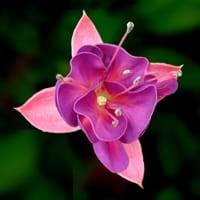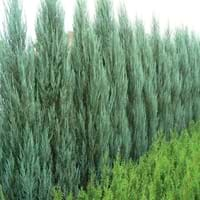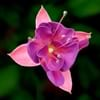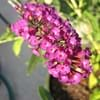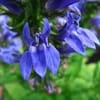Life Span
Perennial
Perennial
Type
Tender Perennial
Needled or Scaled Evergreen
Origin
Caribbean
North America
Types
Fuchsia Decidua, Fuchsia Fulgens, Fuchsia Splendens, Fuchsia Microphylla
Not Available
Number of Varieties
Not Available
Habitat
Forest edges, Woods
Cold Regions, Dry areas, Dry Forest
USDA Hardiness Zone
9-10
3-7
Sunset Zone
16, 17, 23, 24
1a, 1b, 2a, 2b, 3a, 3b, 5, 6, 7, 8, 9, 10, 11, 12, 13, 14, 15, 16, 17, 18, 19, 20, 21, 22, 23, 24
Habit
Arching/Fountain-shaped
Pyramidal
Flower Color
Orange Red
Not Available
Flower Color Modifier
Not Available
Bicolor
Fruit Color
Not Available
Blue
Leaf Color in Spring
Purple, Dark Green
Green
Leaf Color in Summer
Purple, Dark Green
Green
Leaf Color in Fall
Purple, Dark Green
Green
Leaf Color in Winter
Unknown
Green
Leaf Shape
Long Linear
Acicular
Plant Season
Spring, Summer, Fall, Winter
Spring, Summer, Fall
Sunlight
Full Sun, Partial Sun, Partial shade
Full Sun
Growth Rate
Medium
Medium
Type of Soil
Clay, Loam, Sand
Clay, Loam, Sand
The pH of Soil
Acidic, Neutral
Acidic, Neutral, Alkaline
Soil Drainage
Average
Well drained
Bloom Time
Indeterminate
Spring
Tolerances
Drought
Drought
Where to Plant?
Container, Ground, Pot
Ground
How to Plant?
Seedlings, Stem Planting, Transplanting
stem tip cuttings, Tip cutting
Plant Maintenance
Medium
Medium
Watering Requirements
Requires regular watering
Average Water Needs, Do not water frequently
In Summer
Lots of watering
Lots of watering
In Spring
Moderate
Moderate
In Winter
Average Water
Average Water
Soil pH
Acidic, Neutral
Acidic, Neutral, Alkaline
Soil Type
Clay, Loam, Sand
Clay, Loam, Sand
Soil Drainage Capacity
Average
Well drained
Sun Exposure
Full Sun, Partial Sun, Partial shade
Full Sun
Pruning
Prune in spring, Prune lower leaves, Remove dead or diseased plant parts, Remove deadheads, Remove shoots
Remove damaged leaves, Remove dead branches, Remove dead leaves
Fertilizers
All-Purpose Liquid Fertilizer
All-Purpose Liquid Fertilizer
Pests and Diseases
Rhizoctonia Root Rot, Rust
Red blotch
Plant Tolerance
Drought
Drought
Flowers
Yes
Insignificant
Flower Petal Number
Single
Single
Fragrant Bark/Stem
No
Yes
Foliage Texture
Medium
Medium
Foliage Sheen
Matte
Not Available
Attracts
Hummingbirds
Aphids, Early/Late Blight
Allergy
Asthma, Hay fever
Not Available
Aesthetic Uses
Showy Purposes
Not Available
Beauty Benefits
Not Available
Not Available
Environmental Uses
Air purification
Air purification
Medicinal Uses
Not Available
Cold, Cough, Laxative
Part of Plant Used
Flowers, Fruits
Shoots, Stem
Other Uses
Not Available
Not Available
Used As Indoor Plant
Yes
No
Used As Outdoor Plant
Yes
Yes
Garden Design
Bedding Plant, Container, Feature Plant, Foundation, Hedges, Tropical
Foundation, Hedges, Mixed Border, Rock Garden, Wall, Screening, Wind Break
Botanical Name
FUCHSIA triphylla
JUNIPERUS scopulorum 'Cologreen'
Common Name
Fuchsia
Rocky Mountain juniper
In Hindi
फ्यूशिया
Juniperus scopulorum
In German
Fuchsie
Juniperus scopulorum
In French
Fuchsia
Juniperus scopulorum
In Spanish
Fucsia
Juniperus scopulorum
In Greek
φουξία
Juniperus scopulorum
In Portuguese
Fúcsia
Juniperus scopulorum
In Polish
Fuksja
Juniperus scopulorum
In Latin
Fuchsia
Juniperus scopulorum
Phylum
Magnoliophyta
Tracheophyta
Class
Dicotyledonae
Pinopsida
Family
Onagraceae
Cupressaceae
Clade
Angiosperms, Eudicots, Rosids
Not Available
Tribe
Not Available
Not Available
Subfamily
Not Available
Not Available
Importance of Fuchsia and Juniperus scopulorum
Want to have the most appropriate plant for your garden? You might want to know the importance of Fuchsia and Juniperus scopulorum. Basically, these two plants vary in many aspects. Compare Fuchsia and Juniperus scopulorum as they differ in many characteristics such as their life, care, benefits, facts, etc. Every gardener must at least have the slightest clue about the plants he wants to plant in his garden. Compare their benefits, which differ in many ways like facts and uses. The medicinal use of Fuchsia is Not Available whereas of Juniperus scopulorum is Cold, Cough and Laxative. Fuchsia has beauty benefits as follows: Not Available while Juniperus scopulorum has beauty benefits as follows: Not Available.
Compare Facts of Fuchsia vs Juniperus scopulorum
How to choose the best garden plant for your garden depending upon its facts? Here garden plant comparison will help you to solve this query. Compare the facts of Fuchsia vs Juniperus scopulorum and know which one to choose. As garden plants have benefits and other uses, allergy is also a major drawback of plants for some people. Allergic reactions of Fuchsia are Asthma and Hay fever whereas of Juniperus scopulorum have Not Available respectively. Having a fruit bearing plant in your garden can be a plus point of your garden. Fuchsia has no showy fruits and Juniperus scopulorum has no showy fruits. Also Fuchsia is flowering and Juniperus scopulorum is not flowering . You can compare Fuchsia and Juniperus scopulorum facts and facts of other plants too.
